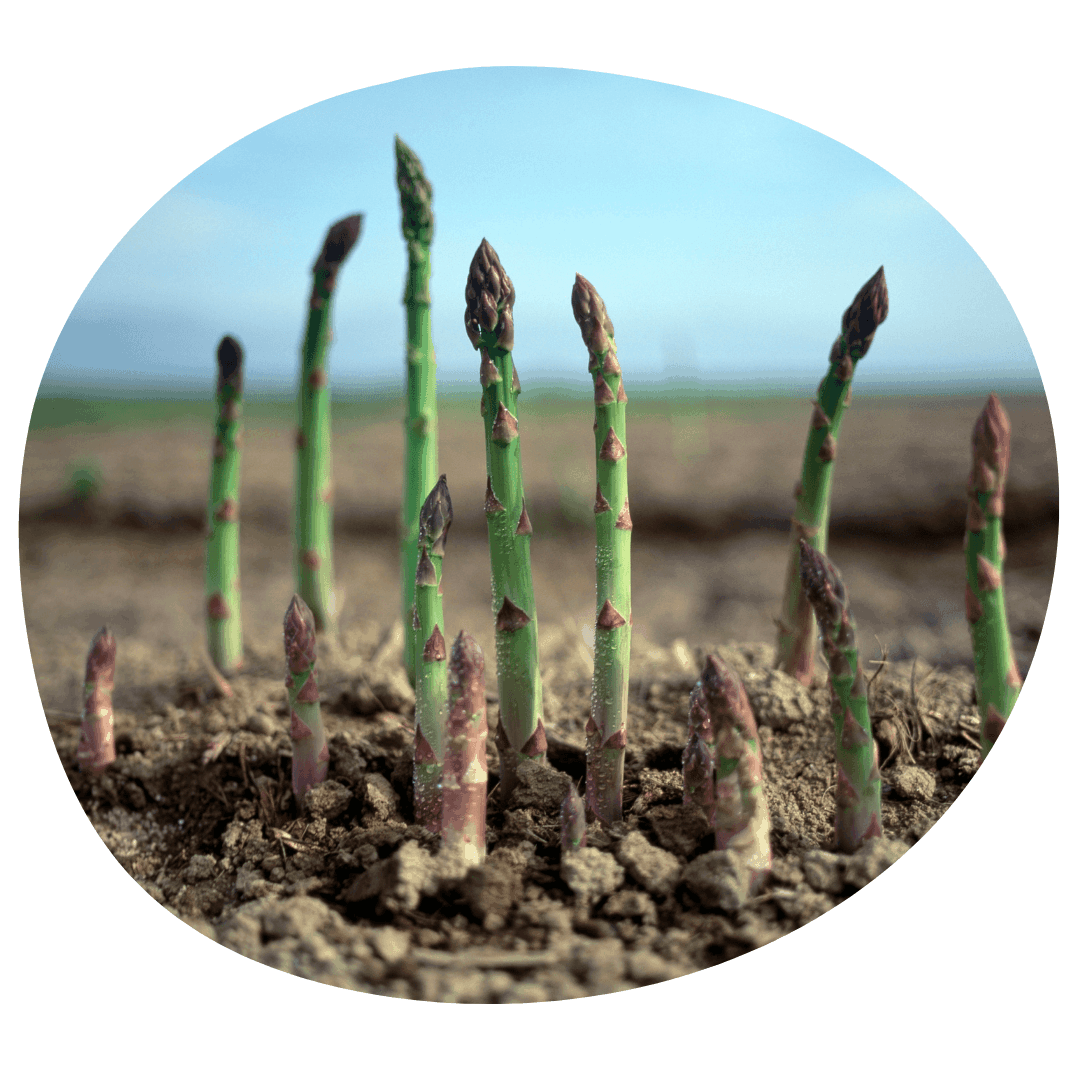How to Grow Asparagus
Growing Conditions
The optimal planting site for asparagus is sandy and well-drained with full sun. Asparagus don’t take well to saturated soil and may rot in areas with poor drainage.
Starting
Asparagus crowns should be planted as soon as the ground can be worked in the spring. One-year-old crowns or plants are preferred. The young plants have compact buds in the center (called the crown), with numerous dangling, pencil-sized roots. Plant in a 25cm (10") deep trench enriched with compost or manure. Set each crown upon a small mound of earth and bury it under several inches of soil, giving a minimum of 12” between each crown. As the stalks grow, continue to fill in the trench until it is level with the rest of the garden. Adventurous gardeners can start their own plants from seed. Although this adds a year to the process of establishing the bed, it ensures a fresh start with your chosen variety of asparagus. Soak your seeds for several hours prior to planting to encourage germination. Sow seeds 10-12 weeks before the last frost and keep in a warm area, at least 20C up to 30C. Seeds may take up to two months to germinate and soil should be kept moist and warm.
Find our full guide to seed starting here.

Care
Asparagus is a heavy feeder and will benefit from a yearly mulch of compost or manure and the addition of a balanced or high nitrogen fertilizer in the spring. Begin harvesting no earlier than the third spring after planting by cutting 15-22cm (6-9") tall spears at the soil surface. In the fall, cut back plants to prevent the spread of pests and diseases.
Pests and Diseases
Aphids - Small green, black, or brown insects that feed on the sap of garden plants. You'll find them under leaves, at blossom tips, and in the joints of stems.
Fusarium Wilt - A fungal infection that causes wilting leaves with yellowed edges.
Fusarium Rot - A fungal infection that causes discoloured stems, rotten roots, and wilted plants.
Crop rotation, garden cleaning, and proper spacing between plants are the best ways to prevent problems caused by pests and diseases. Diatomaceous earth can be used to control crawling pest species, while sticky traps will catch flying pests. Row covers and insect netting can also prevent travelling pests from landing on your crops and causing damage. Ensure good drainage in your chosen planting spot to prevent problems with fungus and rot. Contact us for more specialized pest control methods such as beneficial nematodes.
Harvest
To ensure strong, reliable growth year after year, wait until the third year after planting to harvest your asparagus for the first time. When spears are 6”-10” tall, choose the largest spears and cut them at the soil level. Do not harvest over a period longer than a week or two in the first year. Leave thinner spears to develop and provide energy back to the roots. With each passing year, you may harvest your asparagus over a longer period of time up to a mature period of 8 weeks.

